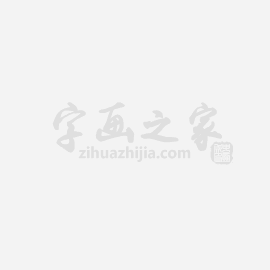SilentSoundsofHeaven
来源:画友投稿整理
Fingerpaintingandfingerprints
IwasratherlateinmakingcontactwithZhangYu’sworks.AsIrememberit,itwasatanexhibitionofabstractartin2007.Twoworkswerehungsymmetricallyrightinthemiddleoftheexhibitionspace.However,itwasnotthepositioningandformatofthedisplayoftheworksthatmademerememberthem.Itwastheirtechniqueandconceptions,whichweredifferentfromthebulkoftheotherworks.Insimpleterms,itwasthefabricationformatofusingfingerprintsinsteadofabrushthatmademetakenotice.
BothintheWestandinChina,therearemanypaintersandartistswhohavepaintedwiththeirfingersinsteadofabrush.ForinstanceGaoQipeioftheLingnanSchoolisrememberedinthehistoryofpaintingforusinghisfingerstomakeink-and-washpaintings.However,thepointofdifferencebetweenthoseartistsandZhangYuisthathisworksarenotpaintingsbutperformances.“Performanceart”isanexpressionusedinWesternarthistoryandinthehistoryofcriticism,andapplyingittoZhangYu’sartisnotstrictlyappropriate.Inrealityitiscultivationpractice,thatis,somethingpracticedasself-cultivation.
CultivationPracticeandtheMind/Soul
Cultivationpracticeisnotproperlytheactivityofartists.ItisaprocessoftrainingforbelieversinBuddhismandDaoism.Weknowthatitisaroadthatleadstothedeepestandmostdistantplacesinthehumanheart,butattheendofthisroadthereisakindofwisdomthatweseek.Reachingthiswisdomdoesnotrequirephysicalstrength,climbingmountainsorcrossingwater,nordoesitrequireslogansorpreaching.Itrequirespeaceandquiet,simplicityandclarity,andthusitisamentalandspiritualactivitydifferentfromeating,drinkingandmakingmerry.
ZhangYuhasdefinedthesubjectofhislatestexhibitionas:“Cultivation•Practice”.Onthesurfaceofthewords,thisisveryclosetothecultivationpracticeofBuddhismandDaoism,butthesearestilldifferent,fortherearedoctrinesandstandardspresentinthecultivationpracticeofBuddhismandDaoism.Forinstance,therearefourpointsinthemethodofselectingcultivationpractice:clarifyingcauseandeffect,maintainingpreceptsanddiscipline,consolidatingthebelievingmind,andchoosingthegatethroughwhichtogo.ZhangYu,however,doesnotconformtoanysuchcategory.Throughhisheart,eyes,mind,handsandthemediaofhischoice,heusesavisualformattoreachakindofbalance.Theworksweseetodayarenon-religiousperformancesandactivities.Hetakesanotionand,throughatransformationofenergy,presentssomethingmildandcontinuous.
ZhangYuisaseniorfigureinChinesecontemporaryart,andtherearevariousviewsandpositionsonhisvariousworksfromvariousperiods.Thisisaphenomenonthatfollowsfromthepublicappearanceofanartist’sworks,andisnotsomethingthattheartisthimselfcancontrolandinfluence.ThegeneralopinionisthathisFingerprintseriesisimportantinChinesecontemporaryart.Itisworthbeingexhilaratedaboutachievingthisappraisal.However,canweenterdeeperintothesubjectoffingerprints?
Category
AsforthepositionofZhangYu’sworksinChinesecontemporaryart,itremindsmeofastorytoldbytheAmericanartistBillViolaatanexhibitionattheMoriArtMuseumTokyo.Viola,whowasNamJunePaik’sassistantforsevenyears,hadfailedtofindtheessenceofartwhilewiththegreatmaster,butoncewhenhetravelledtoKyotoandsawmonksrecitingscriptures,hebecameinspired.Helistenedintentlytothechantingofsutrasandthesoundofthewoodenfish,andponderedthefactthatthissoundhadbeenthesameforthousandsofyears,immutablenotonlytodaybutalsotomorrowandinthefuture.Intheworldofthemonkstherewasnodistinctionbetweenmodernandnon-modern.BillViolaaccordinglyachievedenlightenmentandestablishedhisuniqueviewofartisticvalues.
Inmyview,ZhangYu’sworksarenotsubjecttorestrictionsoftime.Heconsciouslyfeelshiswaytoacodethatslotsinwiththecontext.FingerprintsassuchplaynopartinChinesepainting,nordotheyhaveanystylisticaffinitiesthatcanbeneatlysummarized.However,ZhangYupreviouslyoperatedinthecoreareaofChinesecontemporaryart,andifyoulookathisartistictrackrecord,youwillfindthatthemanyareasandtrackswherehelearnedfromothersallleadtothissolitaryposition.Thisistheresultofcultivationpractice.
Returningtoorigins
Iftheperformanceoffingerprintingiscultivationperformance,thenwhatisthelanguageoffingerprints?Ithastodowith“oneness”.AllZhangYu’sfingerprintworksaremadeusingjustonefinger.
Thecharacterfor“one”(yi,一)isthefundamentalbrushstrokeofChinesecharacters.Itcanalsobe,ofcourse,acharacterinitself.Itisoftenusedforpeopleandmatters,anditisalsothesmallestnumberofphysicalthings.Atthephilosophicallevel,however,“One”isthefoundationofallthings.“TheWayproducesOne.OneproducesTwo.TwoproducesThree.Threeproducesallthingsintheuniverse.AllthingsintheuniversecarryYinbehindandYanginfront,lettingtheenergiesclashtomakeharmony.”(Laozi,Chapter42).Laozialsosays:“HeavengetsOnenessandthusisbright.EarthgetsOnenessandthusispeaceful….AllthingsgetOnenessandthuscreate.”(Laozi,Chapter39).GeHonginChapter18oftheInnerChaptersofBaopuzisays:“MancanpreserveOneness,OnenesscanalsopreserveMan.”Whataboutartthen?ItneedstoembraceOnenessbeforeitcangetbacktothetruth.
ThefundamentalmeaningofOnenessasexplainedfromaphilosophicalangleis“originating”,butinZhangYu’sworks,“One”signifiesareturntoessentials,areturntoorigins.Thuswediscoveranotheraspect.Thisreturngoesthroughtheperformanceformatof“Oneness”(onefinger)toreachthegoalof“returningtoOneness”.
Thesaying“BeginningandEndareasOne”inBuddhistthoughtisexemplifiedinthecopyingofsutras.WhenyoucopyapartoftheDiamondSutra,thehardestthingistomaintainonestateofmindfromwhenyoustartwritinguntiltheend.Itrequirescontinuousbalanceandconservation.Whenthethoughtsinyourmindcannotfocus,theremaybesomeoutsidematterdisturbingyou(suchasasuddentelephonecall),andsoon.Anythingmaycauseyourcopyingtofluctuate,thatis,todeviatefromthetrackofpreservingOneness.Thus,copyingsutrasdoesnotservethepurposeofmemorizingtheircontents,butofcultivatingtheskillof:“BeginningandEndAreasOne”.
WhatisdifficultaboutOneness?Thedifficultyisthatitisakindofcontinuousattitude.Itisanactivitycontrolledalonganinvisiblelineinyourthinking.
ExcitedInsects
Inanightwhenhibernatinganimalswereawakening,whentheweatherwaswarmingagain,andcatkinswereappearingonthewillows,IcametoZhangYu’sstudioinHuantieArtsCityinBeijing.Iwasattractedbyafingerprintworkhunghorizontallyonthewall.Itwasafingerprintworkmadewithwaterfingerprints.Idiscoveredthatwhitedotsprotrudingslightlyfromthepaperpresentedaconditionofgradualchange.ZhangYutoldmethatthiswasanunfinishedwork.Tomakethepartsmadewithwater-printsmaintainabalancewiththepartsuntouchedbywater,itwasnecessarytoaddprintstotherelativelysparseareas.Ithenrealizedthattheapparentlyuniformandunchangingpaintingwasabalanceachievedonlyaftermuchhardwork.Thatpeacefulatmosphereformedareflectionoftheexcitedinsectsoutside.Itisthusonlyafterwehavebeenthroughverydeepreadingofhisworksthattheycancometolifeinourfeelings.
Counterpoint
ZhangYu’ssolofingerprintworksexhibitionCultivation•PracticeonlyshowsthreeworksintheTodayArtMuseum.Thisexhibitionformatisaspacethatgoesforthejugular:inthespaceinthemainexhibitionhall,whichis12.5metershighand12meterswideby30meterslong,theartisthasinstalledonlyonehalf-foldedandhalf-hangingredfingerprintwork.Theangleofitspositioning,andthediagonaloftherectangularspace,addabrilliantlightingframework,andtheworkandtheroomtogetherproduceasenseofsuspense.Wecancallthisworkcomposedofxuanpaper,vegetabledyeandperformanceaminimalistinstallation.
Twootherhangingscrollworksarehunginthesecondaryexhibitionspaces.Theytoohangwithacurvefromtoptobottom,formingtheshapeoftheChinesecharacterfor“human”,ren:人.Atfirstsight,theysuggesttotheviewerthattheartisthasmadetheceilingheaven,andthefloorearth.Theworkbetweenthetwothenis“man”.Thiswouldbeametaphortobeexplainedastheancientstructuralconnectionbetween“heaven,earthandman”.Ofthesetwoworks,oneuseswaterfingerprints,andtheotherfeaturesinkfingerprints.Theypresentthepureconnectionbetweenmatter,performanceandidea.AsIunderstandit,thisisthecounterpointofseekingtheselfintheuniverse.
Perception
DuringthegreatChinesecontemporaryartmovementofthe1980s,ZhangYuwasadrivingforceinexploringcontemporaryink-and-washpainting.Asinallartmovements,thereweremanyparticipantstostartwith,buttheonesultimatelyprecipitatedwerefew.ZhangYuisoneofthefewwhotranscendedthosecollectives,andheisaleaderinthefield.Hehasextendedandexpandedtheconceptwehaveofinkpainting,andhasmadethespiritualpartofitexplicittoawideraudience.Themorphologyofpresentationisnolongerthatofink-and-wash,butgenerally,ifonementionsZhangYu’sname,peopleintheworldofartwillassociateitwithinkpainting.SowhendidZhangYuleavetheink-and-washcirclebehind?
ZhangYubeganhisavant-gardeexplorations–hisfingerprinting–backin1991.InChina,theavant-gardeisoftenmartyred.AlthoughZhangYuknewthevalueorientationofhisworks,itwasdifficultforanyonetobeabletoaccepttheformatoffingerprintingintheartisticandsocialconditionsofthetime.Hewaswronglyconsideredafingerpainter.Wisely,ZhangYucloisteredhimselfandonlybeganhisfingerprintingworkafreshtenyearslater.
Fingerprintsarenon-paintingworks.First,theyhaverejectedthetwoaestheticstandardsof“pictography”(xiangxing,象形)and“freestyleexpression”(xieyi,写意)thathavecontinuedasthetouchstonesofaestheticawarenessformorethanathousandyears.Second,intheseworksweareunabletofindstructuralfactorscapableofexcitingourvisualenthusiasm.Facedwithafingerprintwork,weareunabletosensetheexistenceofmelody.Thereissoundbutnomusic.Thereistingebutnocolour.TheseareworksthatfollowZhangYu’scultivationpractice,“appearances”presentedbeforeourfeeling.Theyhavesoundbutdonotsound,justasalltheflowingliquidsintheworldthatwecannothearhavesounds.Throughoursensorysystemsweperceivetheexistenceofquietness.
Soundsofheaven
Inthenaturalworldthereisthesoundofthewind,thesoundofbirds,ofrunningwater.Wecancalltherealmwhereartbecomesthoroughlynatural:“soundsofheaven”.Nowtheexpression“soundsofheaven”(tianlai,天籁)wasoriginallycoinedbyZhuangziinhischapteronUnifying(Qiwulun,齐物论).Itsthemeis:allthingsareunified.Itisdirectedatourkaleidoscopicworldwherewhatallofusseeisdifferentinsizeandinnumerableinitsvariety,andarguesthepointofviewthattherearenodifferencesbetweenallthesethings.
“Soundsofheaven”isonlyoneofthreeconceptsthatZhuangzimentions,namelysoundsofman,soundsofearthandsoundsofheaven.“Sounds”(lai,籁)referstoanoiseordin,asoundoragitationorrestlessness.Thesoundsofeartharethevariousphysicalsoundsemittedbytheearth.Thesoundsofmanarethehubbubandcacophonyofhumans.Whatarethesoundsofheaven?Everythingintheworldisdifferent.Eachthingformsitsownappearance.Thesoundsofheavenarethesoundsofearthharmonizedwiththesoundsofman.Whatthispresentsisaquietscene.Inmyview,whatZhangYu’sworkspresentuswithistheharmonioussoundofheaventhattranscendsthesoundsofearthandman.Usingtheformatof:“AllthingsreturntoOneness”,ZhangYuhasexpressedtheconceptionthat“Allthingsareunified.”Wecancallartthathasreachedthisrealm,“SoundsofHeaven”.
15March2011,PostmodernCity
TranslatedbyArchibaldMcKenzie/WenZai2April2011






